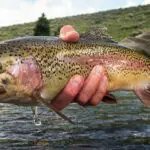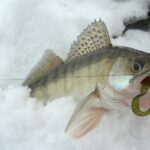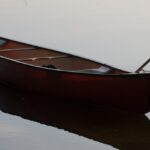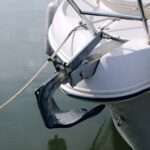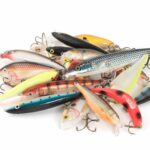Every type of angler, from beginner to pro, uses fishing sinkers. Whether bass fishing, deep sea angling, or going after trout in a stream, the right sinker weight can be what you need to land a lunker.
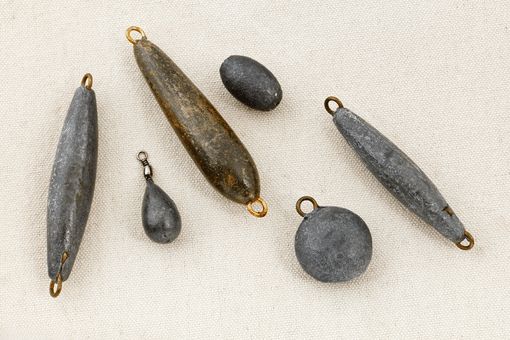
The following is a summary of the most popular fishing sinkers and some advice on how to use each in the most effective manner possible.
What Are Fishing Sinkers?
Fishing sinkers, or fishing weights, help anchor baits or lures to the bottom of a body of water or hold them in place in a current. Holding live bait or a lure in place in a stiff current can be challenging, but the right sinker weight makes it easy. It is always good to have a few sinkers in your tackle box, even if you normally do not fish with them.
Fishing sinkers help hold live bait and lures in a targeted zone, and because of multiple types of sinkers and weights, adding extra weight to get to the perfect weight to hold live bait or a lure exactly where the angler wants is easy.
Sinkers Composition
Sinkers come in just about any weight you can imagine. They are usually measured in part of an ounce or ounces. For sea fishing, for example, it is not uncommon to use sinkers that weigh multiple ounces. For pond fishing, using small sinkers is common, and those often weigh as little as a fraction of an ounce.
Sinkers material is usually a form of metal, often steel. For over 100 years, lead weights were common. Lead sinkers have been outlawed in many states because they pose a risk to waterfowl. Various ducks and geese will eat the weights when they part from their fishing line, and with a lead weight, that can lead to reproductive issues and lead poisoning.
Types of Weight Sinkers
The following are common types of fishing sinkers, how they can be used, and the type of rig they are most effective.
Egg

Egg sinkers are another common fishing weight that is easy to use, and you can increase the weight in increments. An egg sinker has a hole in the middle of the weight, and the line gets fed through the hole, and then the line is attached to a swivel. Another way to use an egg sinker is to loop the main line through the hole and tie the bait or lure directly to the end of the line.
Able to be used in multiple ways, the standard egg-sinker method is to help hold down a traditional cast and wait rig. Egg sinkers are usually tied above two or three feet of leader. Some anglers add a plastic bead between the egg sinker and the swivel to protect the main knot and provide sound when the line moves, which can attract the fish’s attention.
Trolling

Trolling weights come in many forms, including pencil sinkers, split-shot weights, rubber core sinkers, bullet weights, and walking sinkers. They can be attached via a small wire loop leader or, in some cases, directly to the fishing line.
The goal of a trolling sinker is to hold the bait in place while allowing it to move freely behind the trolling vessel.
Split-Shot

A split-shot sinker is probably the most popular type of weight for beginning anglers. Split-shots are the easiest fishing sinkers, which is why they are so popular. Split-shot sinkers look like the Pac-Man character in the popular video game, with handles on the back of the head and a “jaw” clamped on the fishing line.
The benefit of split-shots is that the angler can remove or add more weight as needed. Split-shot sinkers come in different sizes, ranging from very small and light up to about an ounce.
Split-shot sinkers are most effective in a slow or moderate current. Another method is to use split-shot weights at the front of a Texas or North Carolina rig.
Bell

A bell sinker is also called a bank sinker because they are the “go-to” fishing sinker for bank fishing. They are very close to egg sinkers and differ only in their shape. The most effective rig for bell sinkers is to attach the sinker on a leader to a three-way rig, your lure or bait the other eye, and your main line to the top of the swivel.
As a fishing sinker, the bell weight works on fresh and saltwater bottom fishing. Bell sinkers hold the bait in place but allow for a little movement. That lets the bait chum the water immediately following the bait, so if you are going after a target species because of what you see on a fish finder rig, you want to put the bell sinker and bait or lure just ahead of your strike zone.
Bottom Bouncers

Most bottom bouncer sinkers are also advertised as snagless. A bottom bouncer is more of a rig than a stand-alone weight. The standard alignment is an inverted “L” configuration with a weight affixed to a wire and the wire attached to a snap swivel. The snap swivel lets the angler quickly change out lures or a hook while not sacrificing the weight they need.
Bottom bouncer weights get used in everything from shallow to deep water. One benefit to a bottom bouncer is that it creates movement that attracts fish.
Bullet Weights

Bullet sinkers come in various shapes, but usually, they are various sizes of cones. The base of the cone can be concave and abuts the bait or lure directly. Bullet weights are commonly used with a hook and plastic baits, although they can be used with any type of lure that floats or live bait.
The purpose of bullet weights is to allow the weight to move up and down the line, depending on the terrain it is being pulled through. A benefit of a bullet rig is that it’s hard to snag because of its low profile. The only time a bullet weight will snag regularly is in extremely rocky environments.
Drop Shot

Drop shot sinkers set below the bait or lure and let the bait or lure “hover” in a targeted zone. The drop shot weight will drop straight down and hold in place, making it ideal for dropping the bait into the structure or walking it through weeds. The lure anchors the bait, but the bait still has freedom of movement.
The benefit of a drop shot weight is that its low profile makes it difficult to snag, even in heavy structure. That makes it ideal for fishing brush piles, around stumps, or through rock beds. With a buoyant plastic lure, a drop shot rig can make a plastic lure on a hook look like it is moving by itself. If you use a fluorocarbon leader, the bait will not look like it is attached to anything.
Rubber Core
As the name implies, rubber core sinkers have a rubber-infused slot that lets you insert a fishing leader. The slot is tight enough to hold the sinker in place. The rubber core protects the fishing line and allows for quickly adding or subtracting too much weight, depending on how it is used. Rubber core weights are great bank sinkers at a lake or pond but are versatile.
The goal with a rubber core sinker is to add enough weight to get a lure to the desired depth without interfering with the lure action or sliding and crowding a hook. As a sinker material, the rubber core is so easy to use that even anglers with joint issues can use them with little effort.
Pyramid

The pyramid sinker is most commonly associated with surf fishing or rivers with stiff currents. The purpose of a pyramid sinker is to anchor the lure or bait in place and allow for very little movement within the strike zone. Pyramid sinkers tend to be heavier and will get bait or lures to the bottom of a body of water fast.
Usually, pyramid weights are used with heavy-duty, ball-bearing swivels and up to three feet of wire or mono-line leaders. When attached to a leader that is attached to a three-way swivel, the bait or lure can be given room to move around. Pyramid weights will generally start at half an ounce and go up to multiple ounces.
Walking

A walking sinker is generally selected when trolling because it has what looks like a torpedo-shaped body that is slightly bent. Walking sinkers move erratically, and their slim profile makes them hard to snag. You run the line through the small hole on the top of a walking sinker and then connect your line to a barrel swivel.
Walking sinkers hold a trolling lure in place, giving it weight to get to the bottom but not so much weight that the lure gets dragged down or its action is compromised. If you use the walking weight, you want to use a lower speed to troll, as higher speeds can create so much action on the part of the weight the movement sacrifices the lure’s action.
Disk

Also known as “coin sinkers,” the disk sinker anchor bait to the bottom of a body of water and resist the current. Disk sinkers come in different weights and can be chosen based on the current strength. Additionally, a coin weight is ideal for cast and wait fishing strategies.
The ideal rig with a disk sinker is to tie it above a swivel, but it can be tied directly to the main line if you leave enough room for the bait to move in the current. Another strategy is to attach a leader line to the main line and the disk weight to the end of the leader. You then attach your bait to the end of the line.
Sputnik

Sputnik sinkers are specialty sinkers designed to help them anchor themselves to the bottom of a river or when shore or surf fishing in the bay or ocean. The typical Sputnik sinker has rigid wires that extend from the base of the fishing weight to the head while pointing outwards.
Heavier Sputnik weights anchor your bait to the bottom until you move it. The more hefty sinkers work best in heavy surf or a stiff current.
Lighter sputnik sinkers let you “walk” your bait to the bank or shore, maximizing the amount of time your bait or lure gets exposed to the water and placed in front of fish. Light Sputnik sinkers hold bait or lures in place but allow for movement with the current.
- Do You Need An Indicator For Nymph Fishing? - November 16, 2023
- Fishing Safety Tips For Families - September 25, 2023
- What Is The Best Time To Night Fish At A Lake? - September 18, 2023

